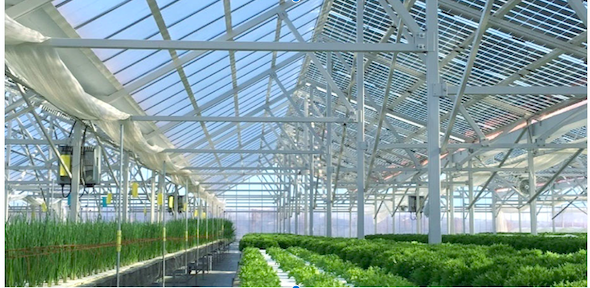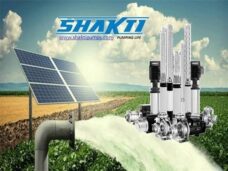
Solar, despite great progress for towards becoming the cheapest, greenest and cleanest source of power, still has one weak spot. The large tracts of land that are needed for every MW of solar produced on the ground. At almost 5 acres per MW, this has regularly been pointed out as the biggest achilles’ heel for the green power source. With only so much waste land and viable desert land (close to transmission facilities), solar increasingly finds itself up against a tradeoff on other uses for the land it will be built on. In fact, this has been among one of the few key reasons why solar has failed to make a significant impact in large parts of North and East India, where agricultural land has tended to be much more fertile. And hence, not a viable possibility for handing over to a solar power plant. Laws exist in fact that expressly disallow the use of fertile agricultural land for the purpose.
A new study produced by the LOCO-MOTION project and funded by the European Union, estimates that 5% of the total landmass would be needed if solar was to supply 80% of the electricity produced in the EU, India, Japan, and South Korea by 2050. The environmental cost of decarbonising the energy system would include: conversion of arable land, fragmentation of ecosystems, further deforestation for relocation of agricultural activities to biodiversity-rich areas, etc. This is why balancing agriculture with solar power generation hs become an increasingly urgent issue. Or the growing interest in floating solar.
Enter agrivoltaic, or solar designed specifically for working on agricultural land. Ideally, they seek to deliver three positives- to increase food production, boost renewable energy production and achieve important water savings — all on the same piece of land. A further benefit we were introduced to at a solar farm was how the land and the air under the panels is much cooler in the summer and warmer in the winter. Agrivoltaics have become a viable option thanks to the drop in panel prices, that has more than offset the higher structural costs due to the increased height.
For instance, both Japan and India have been working towards using farmland more effectively by setting up solar power plants in it without impeding agriculture. The Farmdo Group, a Japanese renewable energy company, is aiding the government in fulfilling its goal of net-zero emissions in 2050, by harnessing the sun’s energy using the solar panels of vinyl greenhouses, inside which plants like arugula and lettuce are grown. The greenhouses are spread over 48 hectares in Gunma Prefecture and generate electricity which can power 10,000 households. The installation of solar panels requires the conversion of a portion of agricultural land to non-agricultural use, and from 2013 to 2018, agricultural land allocated for solar power generation grew from 19 to 560 hectares. Experts reckon that by 2050, 30% of solar power generation on land is likely to be concurrent with some sort of agriculture alongside.
In India, Delhi‘s state government also decided to set up solar power plants in agricultural lands, without giving up agriculture there, back in 2018-19. For the same, this year in January, the Delhi government has finally secured consent from farmers across 9 villages to use their 225 acres of land as part of a long-awaited scheme- ‘Mukhyamantri Kisan Aay Badhotri Yojana’- that aims to enhance farmers’ income and the city’s power production. It is said that the farmers would be able to continue their farming activities post the power plants’ set up since the solar panels would be installed at a minimum height of 3.5 metres from the ground. This would allow tractors and other machinery to ply on the field. Like in the case of Japan, a portion of Delhi’s agricultural land- 6 hectares to be exact- would be converted for non-agricultural use, that is, for setting up a 1 MW plant which would run for 25 years and generate 1.2 million units of electricity annually. The farmers would get 1,000 units of energy, ₹1 lakh rent (increasing at 6% compound interest) per acre per year. Of course, agriculture experts might prefer rowing suitable vegetables on such ground rather than staples like wheat, which actually do need their fill of direct sunshine too.
Agriculture-plus-solar projects have raised real concerns among farmers about crop growth being hindered by the solar panels blocking the light. To solve this, the Japanese agriculture ministry requires panels-installed lands (except abandoned farmland) to produce 80% or more crops per square meter compared with the regional average, leading farmers to growing low-sunlight consuming crops like myoga (Japanese ginger) and fuki (Japanese butterbur). Still, fears about solar expansion leading to decline of agricultural production capacity persist. Indian farmers are similarly worried about the possible deprivation of direct sunlight, loss of land fertility, and reduction of yield over time. To look into these concerns, the government set up a demo project at an agriculture institute’s campus in Kirari in January 2020, which was delayed due to the coronavirus pandemic. Results from that would surely open up many more possibilities to make agrivoltaics more relevant and efficient.



























